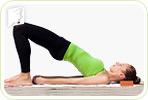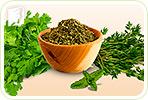Being one of the most emotionally disturbing and embarrassing menopause symptoms, incontinence calls for an immediate resolution. Fortunately, armed with knowledge about effective incontinence treatments, middle-aged women can say goodbye to accidental leaks once and for all.
Keep on reading to discover how to treat urinary incontinence during menopause to go back to enjoying a bladder control into your twilight years.
Three Approaches to Treating Incontinence
When it comes to treating incontinence, there are three levels of approaches women can consider: (1) Lifestyle changes, (2) Alternative medicine, and (3) Conventional medicine. To keep their treatment safe and risk-free, women can begin with natural approaches and move on to more conventional treatments only if necessary.
Lifestyle Changes for Incontinence Treatment

The first stage of incontinence treatment requires the greatest self-discipline, but it entails virtually no risks. It consists of making healthy lifestyle adjustments not only to relieve incontinence, but to improve overall health.
Nutritious Diet
How to treat incontinence with natural methods starts with a woman's diet. To build a wholesome menopause diet that can help balance hormones and relieve symptoms, she should eat:
- Phytoestrogens are compounds found in various plants that promote hormonal balance and incontinence relief by mimicking the action of estrogen in the body.
Soy, flax, oats, sesame, lentils, apples
- Dietary fiber is key for smooth digestion and regular bowel movements. It can help treat incontinence by preventing constipation, which may weaken pelvic floor muscles and lead to accidental leaks.1
Whole grains, fruits, vegetables, legumes
- Water intake within the recommended amounts - six to eight glasses daily - is a must for incontinence treatment, although many women may be tempted to limit their intake to avoid accidents.2
Women can also benefit from cutting on caffeine as it has diuretic properties, which means it may increase the amount of urine produced in the body.3 Spicy or acidic foods may irritate the bladder so they are best to be avoided, too.
Regular Exercise
Keeping up with regular exercise is of the essence for menopausal women. It can help balance hormones, lessen mood swings, regulate bowel movements, and prevent menopausal weight gain. Studies have shown that being overweight or obese is a risk factor for developing urinary incontinence in women.4
Amount: For incontinence treatment, women are advised to focus on getting 150 minutes per week of low to moderate physical activity, or 75 minutes of vigorous workouts weekly.5
Type: While the best workouts consist of aerobic and muscle-strengthening exercises, some cardio workouts can cause leaks. As such, more focus should be placed on stretches and pelvic floor muscle exercises, or Kegels.
Useful tips: When just starting to exercise, it may give women comfort to wear an absorbent pad so that they can focus on their workout with peace mind and reap the most benefits.
Precautions: To prevent weakening pelvic floor muscles and worsening of incontinence symptoms, menopausal women should stay away from strenuous workouts, like heavy lifting.
Wholesome Habits
To complement a healthy diet and regular exercise, menopausal women can implement various wholesome habits that will help them optimize their health and treat urinary incontinence.
Relieving stress through meditation or deep breathing exercises can help women relieve their symptoms as high cortisol levels have been associated with urinary incontinence.6
Maintaining a bladder diary to take note of daily fluid intake, bathroom trips, and accidental leaks can help keep track of progression and set the ground for effective bladder control training.
Partaking in bladder training is likely to be recommended by a physician for treating incontinence. Besides Kegel exercises, it may include scheduled urination or other methods.7
Quitting smoking and cutting down on alcohol should be a permanent part of incontinence treatment as they may worsen the symptoms and negatively affect a woman's overall health.
Alternative Medicine for Incontinence Treatment

The second stage of incontinence treatment offers a variety of options, including herbal supplements.They involve little to no risk, are easy to follow, and tackle the underlying cause of incontinence, which is hormonal imbalance.
There are two kinds of herbal supplements that might be considered for incontinence treatment: phytoestrogenic and herbal-balancing supplements.
Phytoestrogenic Supplements
Phytoestrogenic supplements - like red clover - contain plant-based compounds, called phytoestrogens, whose function is similar to that of estrogen in the body. As such, they compensate for its low levels during menopause, thus treating incontinence and other menopause symptoms. Caution should be practiced, however, as their extended use can make the body less capable of producing its own hormones, leading to further imbalance.
Hormone-Regulating Herbal Supplements
Hormone-regulating supplements, like Macafem, nourish the endocrine glands with beneficial alkaloids, instead of introducing exogenous hormones. This stimulates their optimal hormonal production to treat incontinence and other symptoms of menopause. Because of this, they are considered one of the safest and most effective long-term treatments.
From Nature and Health Magazine, Dr. Chacon says:
"Macafem's nutrients help restore natural hormones in women. Unlike hormone drugs, which are basically resumed in taking synthetic hormones, Macafem acts totally different in your body. It nourishes and stimulates your own natural hormone production by inducing the optimal functioning of the pituitary and endocrine glands." Click on the following link to learn more about Macafem.
A combination of lifestyle changes and herbal supplements is often sufficient treatment for incontinence during menopause. In the case of severe symptoms, more conventional approaches might need to be explored.
Conventional Medicine for Incontinence Treatment

Conventional treatments for incontinence may entail the highest risk and cost, but can bring drastic improvements in symptom severity and life quality. Their use should be thoroughly evaluated to ensure that the cost does not outweigh the benefits.
The most common conventional treatments for menopausal incontinence include the following:
Medications
Women considering incontinence medication have several options at their disposal. Most work by reducing urgency, improving the ability to empty the bladder, and helping hold more urine. They are as follows:
Anticholinergics helps treat urge incontinence by calming an overactive bladder and lessening an urge to urinate.
Mirabegron is an incontinence medication that relaxes bladder muscles and expands its urine holding capacity.
Antidepressants may be used to treat urge and stress incontinence, especially in women with depression.
Onabotulinumtoxin type A, known as Botox®, can be injected into the bladder muscles to manage its overactivity.
Hormone replacement therapy (HRT) - containing estrogen, progesterone, or their combination - was once the most common menopause treatment. Estrogen can be applied topically in the vagina to treat incontinence and other symptoms, like vaginal dryness. Oral HRT is not used for incontinence and is generally reserved for severe symptoms because of serious side effects and health risks it can cause, as shown in the studies below.
The 2002 reports from the Women's Health Initiative, published in JAMA, revealed that women taking HRT are more prone to serious health risks, including breast cancer, heart disease, and strokes.8 A more recent (2019) Oxford University study on HRT's effects not only confirmed the WHI's findings, but also discovered that the risks of hormonal therapy may persist for over a decade.9
Medical Procedures and Surgery
In advanced cases of incontinence, women may need surgical interventions to prevent leaks. They are as follows:
Electrical stimulation is a procedure aimed at treating urinary incontinence by strengthening pelvic floor muscles with gentle electrical current.
Medical devices, such as urethral inserts or pessaries, might be inserted into the various parts of the urinary tract to help in the treatment of incontinence.
Surgery, including sling procedures or prolapse surgery, may be necessary to repair the vaginal wall or support the urethra in order to treat incontinence of various types.
Because the aforementioned treatment stages are not mutually exclusive, it is natural to move between them if the need arises. However, many women find that a blend of wholesome lifestyle practices and herbal supplements is the most effective approach to treating incontinence during menopause, without having to depend on riskier approaches.
A Safe Way of Treating Incontinence
Implementing Lifestyle Changes:
- Eating foods rich in phytoestrogens and dietary fiber
- Getting 150 minutes of low to moderate exercise a week
- Partaking in bladder control, like Kegels or scheduled urination
- Quitting addictions to smoking and excessive alcohol drinking
And Taking Herbal Supplements:
- Phytoestrogenic herbal supplements, like red clover
- Or hormone-regulating supplements, like Macafem
Sources
- American Physician. (2005). Selecting Medications for the Treatment of Urinary Incontinence. Retrieved May 20, 2020 from https://www.aafp.org/afp/2005/0115/p315.html
- Harvard Health Publishing. (2014). New treatments for incontinence. Retrieved May 20, 2020 from https://www.health.harvard.edu/womens-health/new-treatments-for-incontinence
- Health Direct. (2019). Incontinence treatments – 10 ways to stop leaks. Retrieved May 20, 2020 from https://www.healthdirect.gov.au/incontinence-treatments
- Mayo Clinic. (2017). Bladder control: Medications for urinary problems. Retrieved May 20, 2020 from https://www.mayoclinic.org/diseases-conditions/urinary-incontinence/in-depth/bladder-control-problems/art-20044220
- Mayo Clinic. (2019). Urinary incontinence. Retrieved May 20, 2020 from https://www.mayoclinic.org/diseases-conditions/urinary-incontinence/diagnosis-treatment/drc-20352814
- Urology Care Foundation. (2020). What is Urinary Incontinence? Retrieved May 20, 2020 from https://www.urologyhealth.org/urologic-conditions/urinary-incontinence
Footnotes:
- National Association for Continence. (n.d.). Can your diet affect your bladder or bowel control? Retrieved May 20, 2020 from https://www.nafc.org/diet-habits
- NHS. (2019). 10 Ways to Stop Leaks. Retrieved May 20, 2020 from https://www.nhs.uk/conditions/urinary-incontinence/10-ways-to-stop-leaks/
- NHS. (2019). Incontinence: Non-surgical treatment. Retrieved May 20, 2020 from https://www.nhs.uk/conditions/urinary-incontinence/treatment/
- Journal of Urology. (2009). Obesity and Urinary Incontinence: Epidemiology and Clinical Research Update. Retrieved May 20, 2020 from https://www.ncbi.nlm.nih.gov/pmc/articles/PMC2866035/
- American Heart Association. (2018). Recommendations for Physical Activity in Adults and Kids. Retrieved May 19, 2020 from https://www.heart.org/en/healthy-living/fitness/fitness-basics/aha-recs-for-physical-activity-in-adults
- BMC Urology. (2015). Correlation between psychological stress levels and the severity of overactive bladder symptoms. Retrieved May 20, 2020 from https://www.ncbi.nlm.nih.gov/pmc/articles/PMC4357155/
- John Hopkins Medicine. (n.d.). Solutions for a Leaky Bladder. Retrieved May 20, 2020 from https://www.hopkinsmedicine.org/health/conditions-and-diseases/urinary-incontinence/solutions-for-a-leaky-bladder
- JAMA. (2002). Risks and benefits of estrogen plus progestin in healthy postmenopausal women: principal results from the Women's Health Initiative randomized controlled trial. Retrieved May 20, 2020 from https://www.ncbi.nlm.nih.gov/pubmed/12117397
- The Lancet. (2019). Type and timing of menopausal hormone therapy and breast cancer risk: individual participant meta-analysis of the worldwide epidemiological evidence. Retrieved May 20, 2020 from https://www.thelancet.com/journals/lancet/article/PIIS0140-6736(19)31709-X/fulltext



